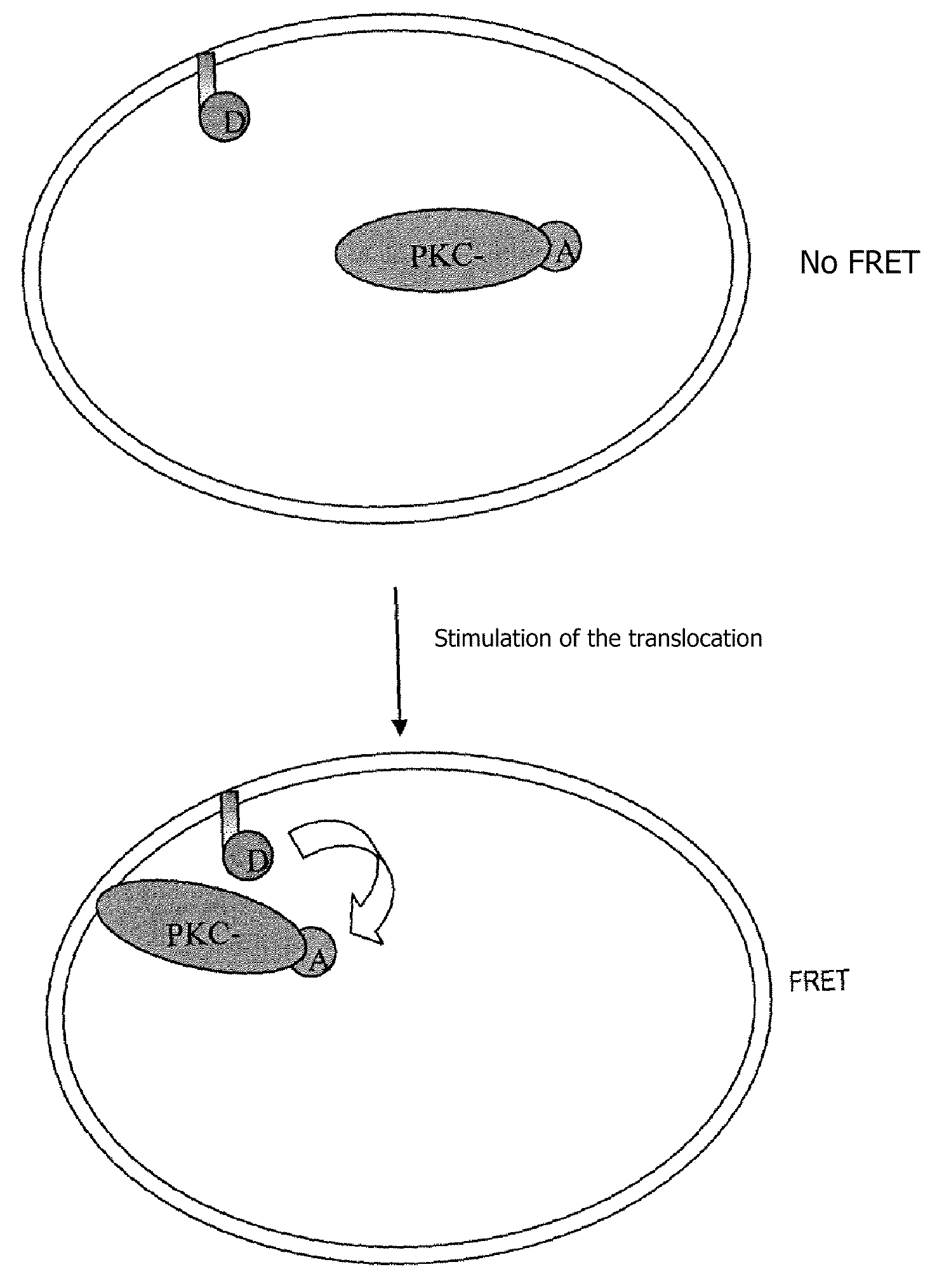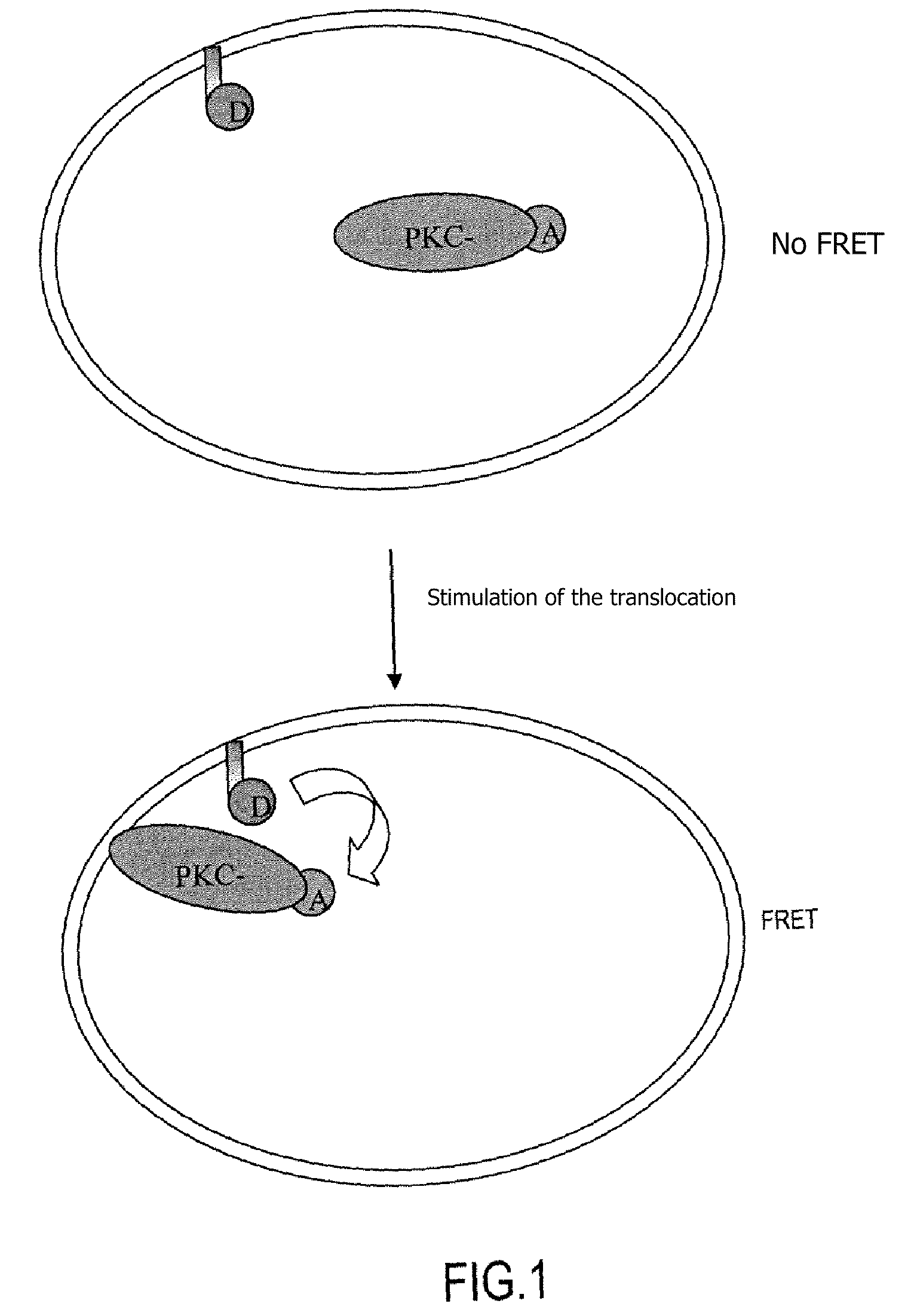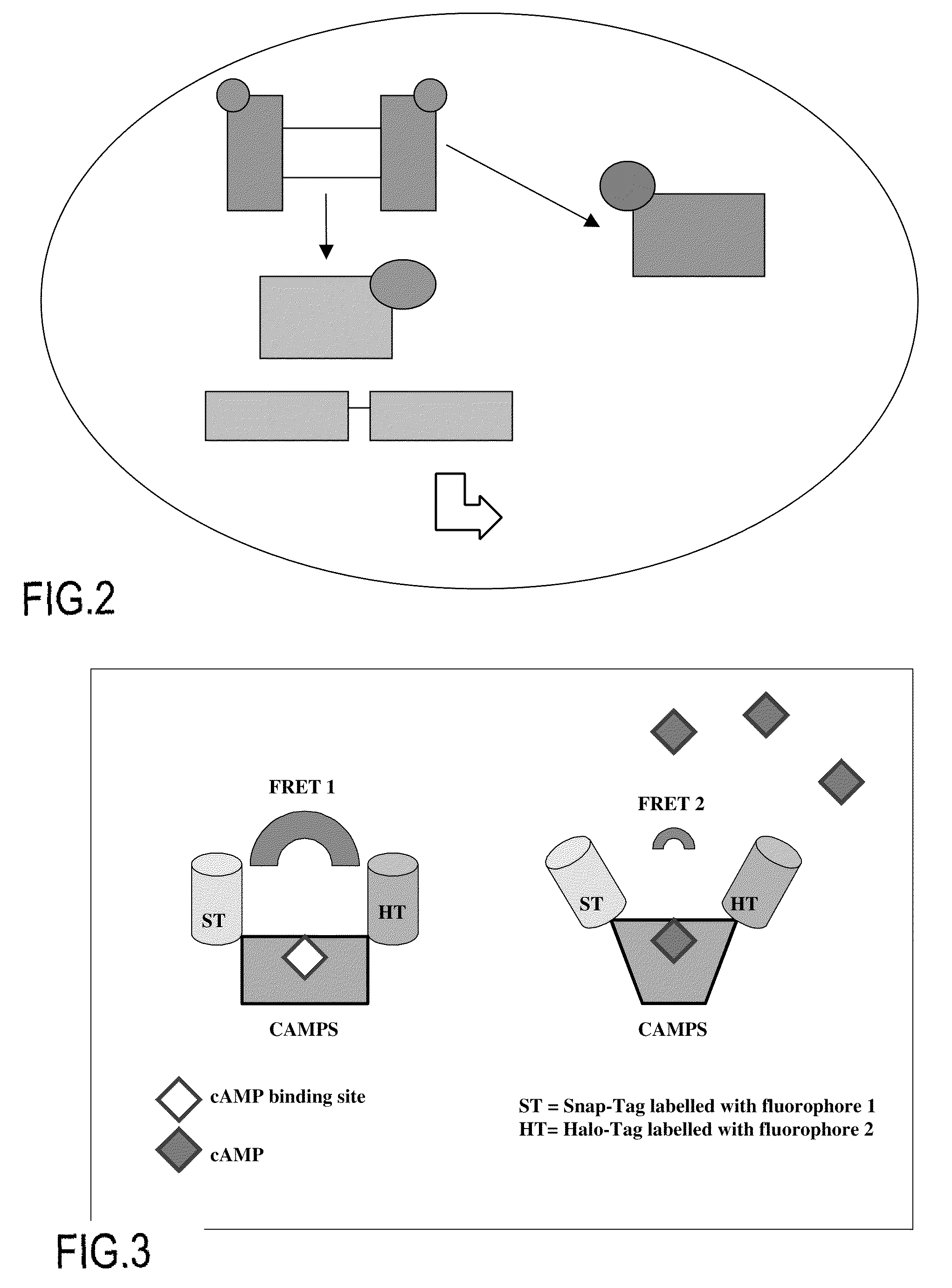Method for detecting intracellular interaction between biomolecules
- Summary
- Abstract
- Description
- Claims
- Application Information
AI Technical Summary
Problems solved by technology
Method used
Image
Examples
example 1
Measurement of the Translocation of Protein Kinase C-gamma (PKC-γ) (cf. Flow Chart, FIG. 1)
[0109]Protein kinases C are proteins belonging to a group of phospholipid-dependent serine / threonine kinases. These proteins play a major role in numerous cell signaling pathways. Physiologically PKC-γ is activated in a calcium-dependent manner by phosphatidylserines (PS) and it binds diacylglycerol (DAG), but PKC-γ can be activated independently of the presence of DAG by tumor-inducing phorbol esters (PMA).
[0110]After stimulation, PKC-γ undergoes a translation of the cytoplasm into the plasma membrane, it being possible for this translocation to be measured by means of a fusion protein with GFP after stimulation with PMA (Sakai N. J., Cell Bio. (1997) 139, 1465-1476).
[0111]A fusion protein was created between PKC-γ and a suicide enzyme, called HaloTag, in order to label the PKC-γ with an acceptor fluorescent organic compound, and a tool was developed to label the plasma membrane specifically ...
example 2
Revealing Androgen Receptor / Coactivator or Androgen Receptor / Corepressor Interactions (cf. Flow Chart, FIG. 2)
[0116]Androgens and their functional receptor (AR) are responsible for normal differentiation of the external male phenotype. Cytosolic androgen receptors, in the inactive state, are associated with heat shock proteins. After binding with the ligand, the receptors dimerize and are subjected to a translocation into the nucleus. AR coregulators (coactivators or corepressors) will or will not then interact with the receptor and the result of these interactions will optionally cause the complex to bind to the DNA at a specific sequence (called ARE=androgen receptor responsive element) and thus to regulate the transcription.
[0117]The method according to the invention is used to reveal the interactions between a corepressor, a coactivator and an AR. This is done by introducing expression vectors into the cell in order to express the following in the intracellular medium:[0118]an A...
example 3
cAMP Biosensor: Detection of Conformational Modifications of a Fusion Protein Comprising a cAMP Binding Domain (cf. Flow Chart, FIG. 3)
[0123]In this Example the variations in the TR-FRET signal of a pair of donor / acceptor fluorescent compounds is measured by coupling these fluorophores with a cAMP binding domain (e.g. that of the βII regulatory subunit of PKA, or that of cAMP-activated exchange proteins, which are known by the term “CAMPS”). These molecular constructs can be used to quantify, in living cells, the levels of cAMP after pharmacological stimulation of a G protein-coupled receptor (GPCR) (cf. Nikolaev et al., JBC, vol. 279, no. 36, pp 37215-37218, 2004).
[0124]The plasmid coding for a fusion protein of the SnapTag / CAMPS / HaloTag type is transfected into HEK cells. 24 hours or 48 hours after transfection, the cells are incubated (1 hour at 37° C.) with the SnapTag and HaloTag substrates, each of which is coupled with a member of a TR-FRET donor / acceptor pair.
[0125]When the ...
PUM
| Property | Measurement | Unit |
|---|---|---|
| emission wavelengths | aaaaa | aaaaa |
| emission wavelengths | aaaaa | aaaaa |
| fluorescence lifetime | aaaaa | aaaaa |
Abstract
Description
Claims
Application Information
 Login to View More
Login to View More - R&D
- Intellectual Property
- Life Sciences
- Materials
- Tech Scout
- Unparalleled Data Quality
- Higher Quality Content
- 60% Fewer Hallucinations
Browse by: Latest US Patents, China's latest patents, Technical Efficacy Thesaurus, Application Domain, Technology Topic, Popular Technical Reports.
© 2025 PatSnap. All rights reserved.Legal|Privacy policy|Modern Slavery Act Transparency Statement|Sitemap|About US| Contact US: help@patsnap.com



